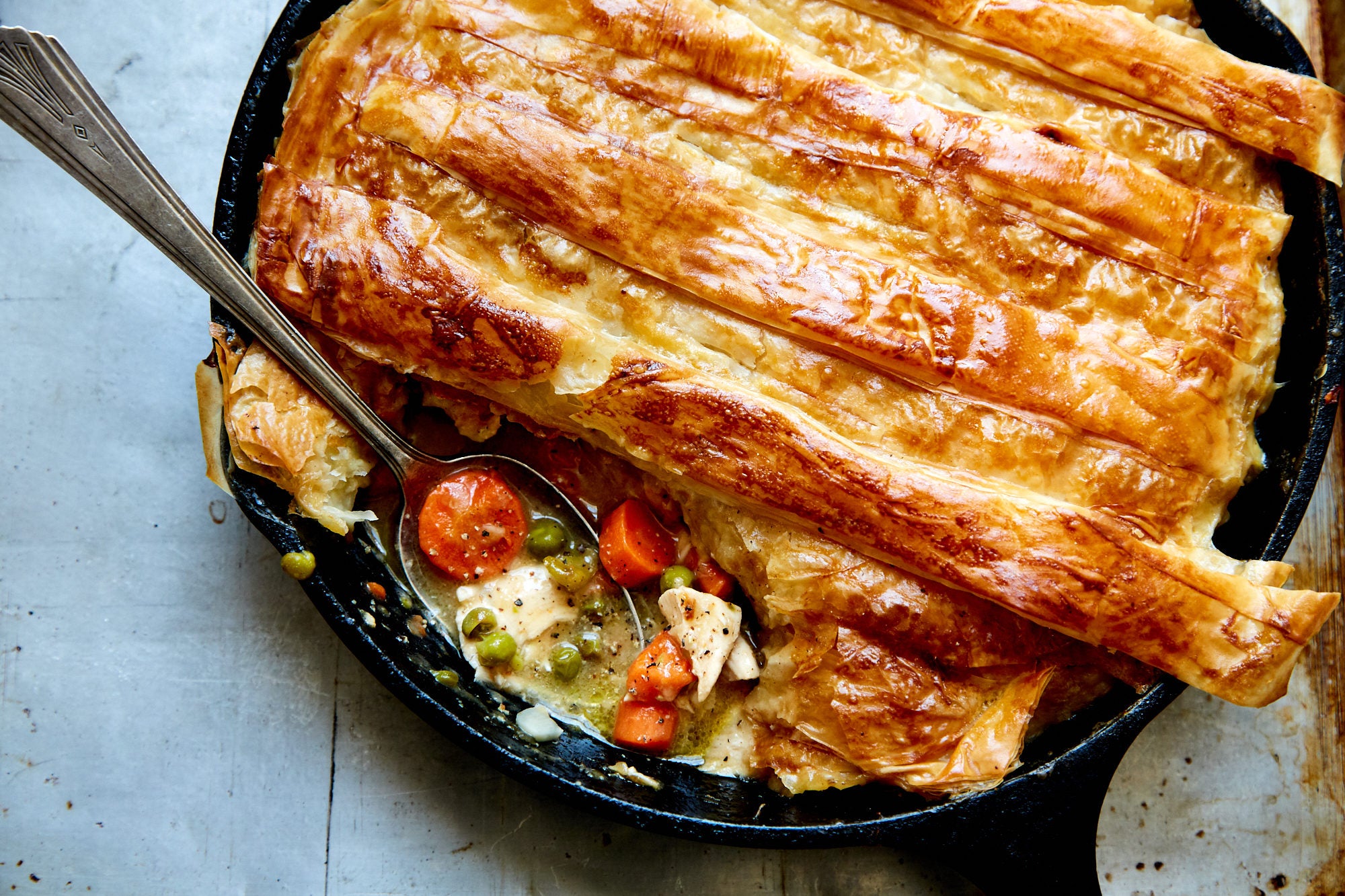
The secret to the crackliest pastry doughs.
Both puff pastry—the buttery dough used for French pastries like croissants—and filo—thin sheets of dough used in Middle Eastern sweets like baklava—get their crackly loft from interspersing flour and fat. As a pastry bakes, the water in the dough converts to steam, pushing up layers above it, while fat acts as waterproofing, keeping each layer of dough separated and flaky. But that’s where the similarities end.
Puff pastry is made by folding solid layers of fat in between a flour-and-water dough. Every fold adds new layers, and before long, a sheet of puff pastry contains hundreds of individual layers of flour and butter. Filo is a much drier dough that’s stretched into paper-thin sheets, and it’s layered with melted butter or oil much in the same way you layer sauce and noodles to make lasagna. Fewer layers plus distinct sheets of a dry dough equals less overall rise and a pastry that’s more crunchy than puffy.